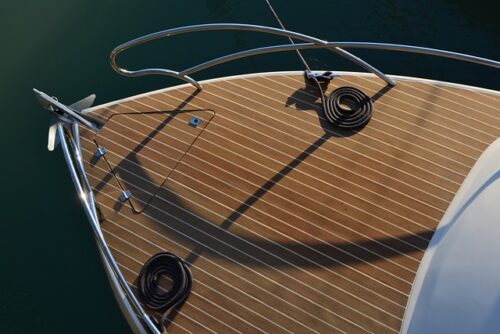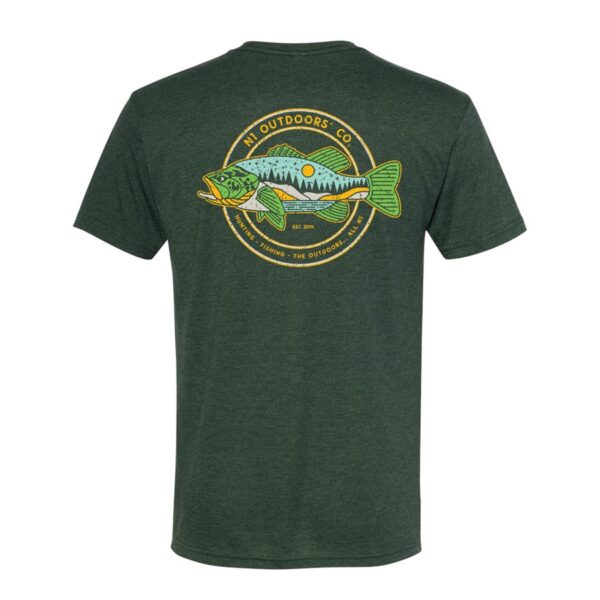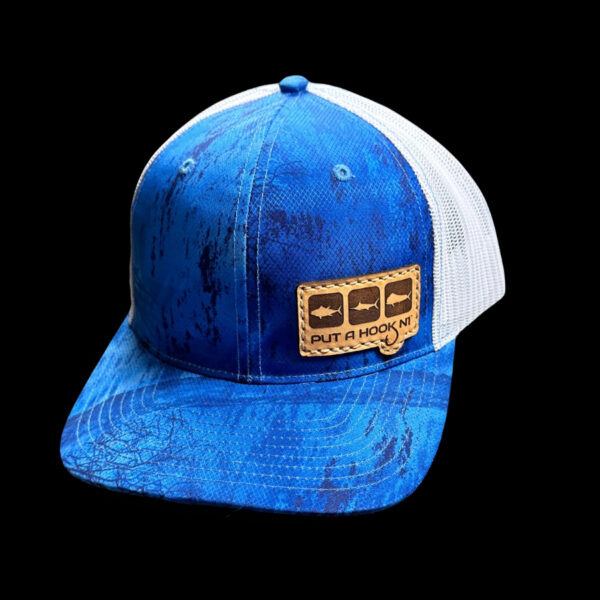The United States is home to some of the most scenic rivers and lakes. From oceans to lakes, creeks and estuaries, the U.S. is ripe for the picking when it comes to boating activities.
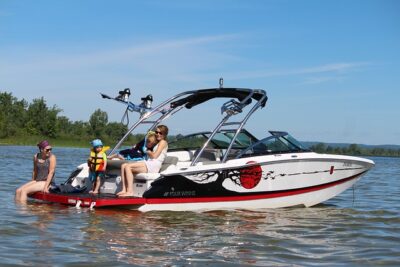
You never know when you might find yourself on your next (or first) boating adventure, so why not arm yourself with an understanding of a glossary of boating terminology? After all, having an ample understanding ensures an enjoyable and safe experience on the water.
Boat Types You Should Know
Before we jump into other specific boating terms, lets get started learning some basic boat types.
Pleasure Craft
A pleasure craft is exactly what it implies – a vessel used for recreation. Common types include sport fishing boats, bow riders, yachts and inflatable boats.
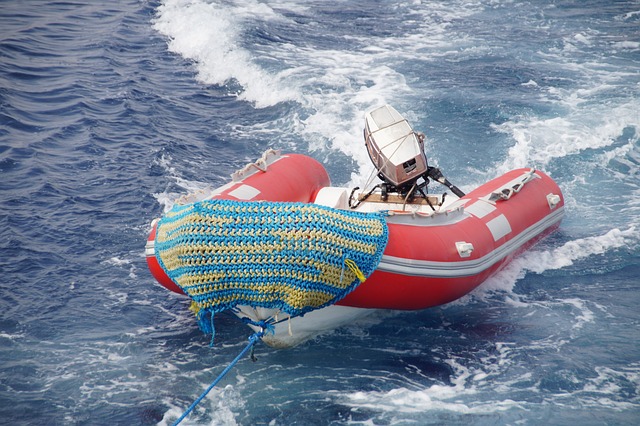
Inflatable boats are one type of pleasure craft.
-
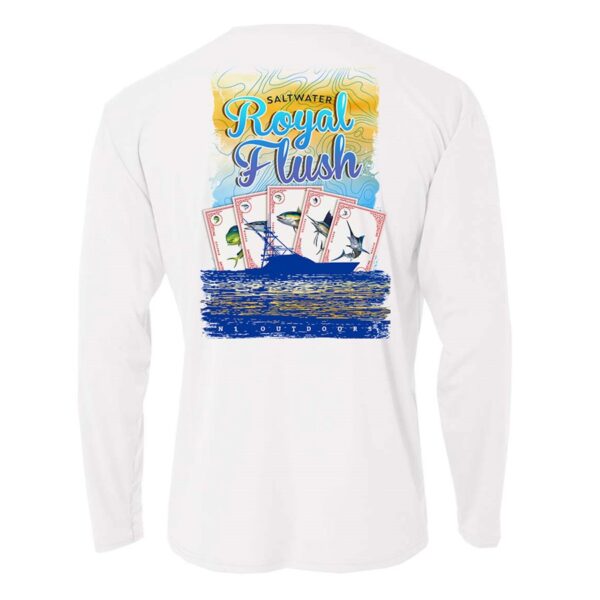 N1 Outdoors® Royal Flush™ UPF 45+ Performance Fishing ShirtPrice range: $39.99 through $44.99
N1 Outdoors® Royal Flush™ UPF 45+ Performance Fishing ShirtPrice range: $39.99 through $44.99 -
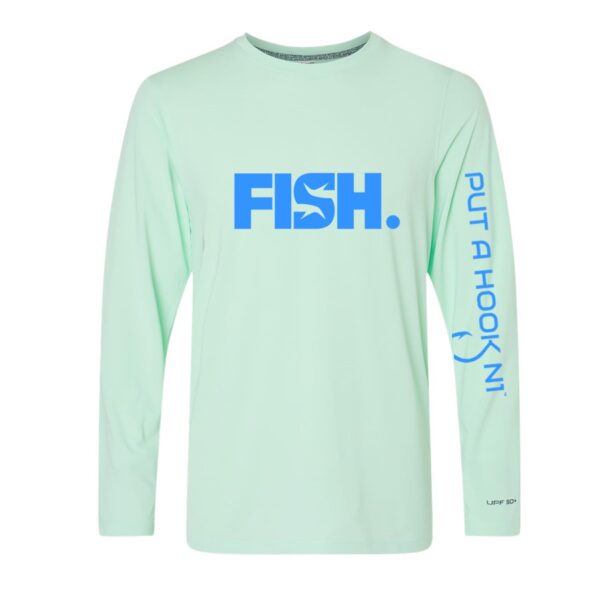 N1 Outdoors® FISH. Performance UPF 50+ ShirtPrice range: $37.99 through $39.99
N1 Outdoors® FISH. Performance UPF 50+ ShirtPrice range: $37.99 through $39.99 -
Product on sale
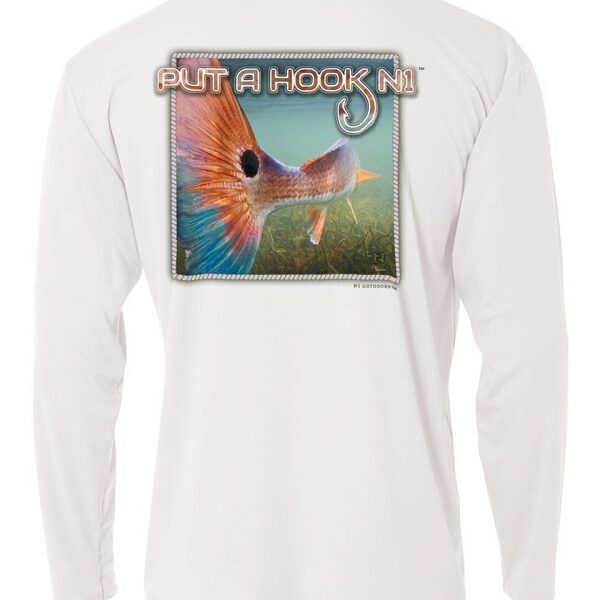 Put a Hook N1™ UPF 50+ Redfish Performance Fishing Shirt$22.00
Put a Hook N1™ UPF 50+ Redfish Performance Fishing Shirt$22.00
>> Check out more awesome fishing shirts on our products products page!
Personal Watercraft
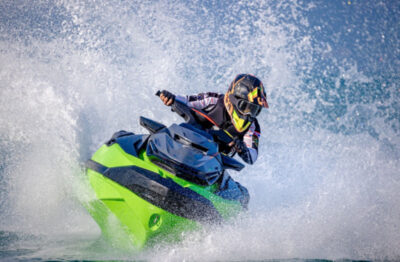
This is a small boat with an inboard engine powered by a jet propulsion system. Because of its size and power source, it cannot be steered without applying throttle. Personal watercraft (PWC) would encompass jet skis and water scooters.
Power-Driven Craft
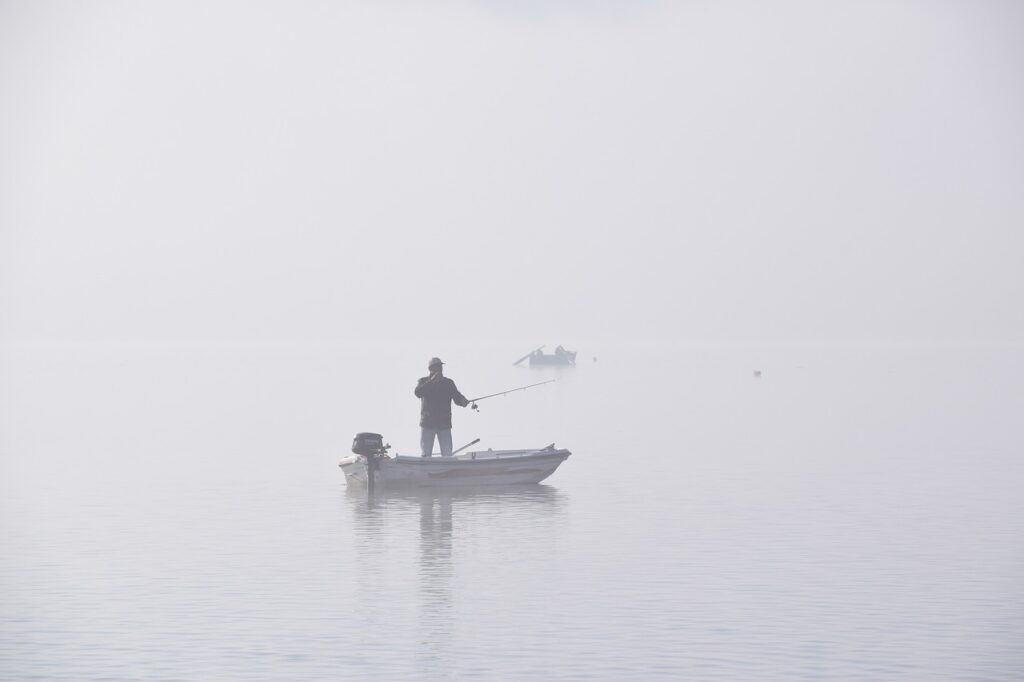
A power-driven craft is any boat powered by a motor or engine. Common examples include bow riders, deck boats, and sport fishing boats.
Human-Powered Craft
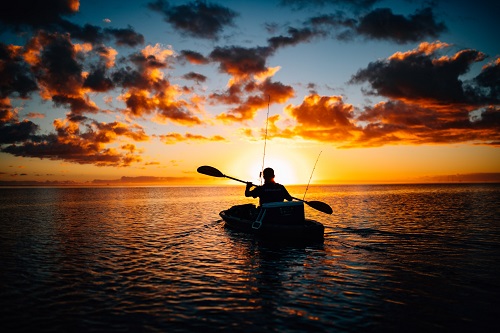
Human-powered watercraft include canoes, rowboats and kayaks.
These boats operate without any power and are propelled manually using a pedal, sail or foot pedals. Canoes, kayaks, and rowboats are categorized as human-powered craft.
Now, On To The Boating Terms…
Familiarize yourself with this glossary of boating terms, and you’ll be on your way to becoming a more knowledgeable boater…
Astern
This refers to the area or location behind or toward the back of the boat or ship.
Beam

The measurement of the width of a boat at its widest point.
Bow
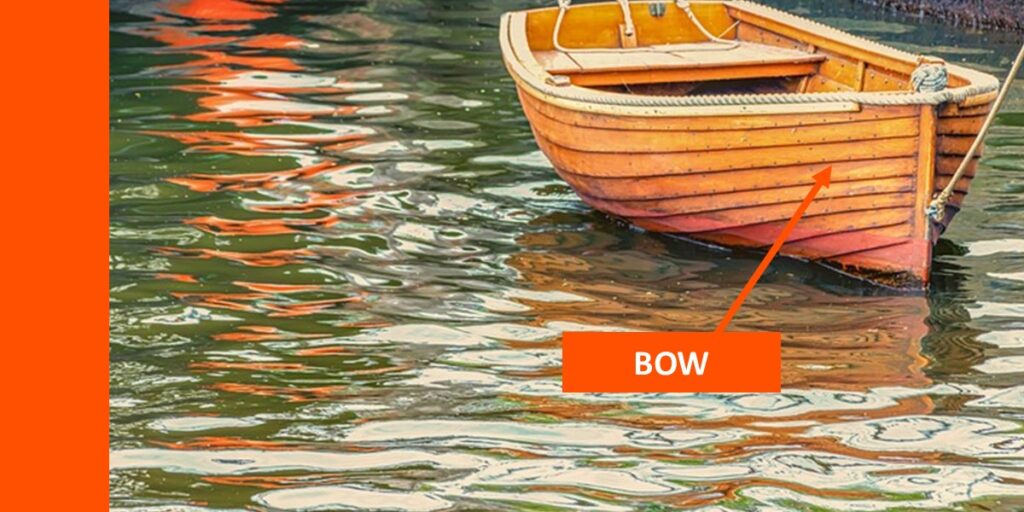
The front part of a a boat. A boat with an open bow usually has seating space. A closed bow has seating below deck (the space below the main deck of the boat).
Bowline Knot and Bow
The bowline knot creates a loop at the end of a line. (This is not to be confused with a boat’s bow).
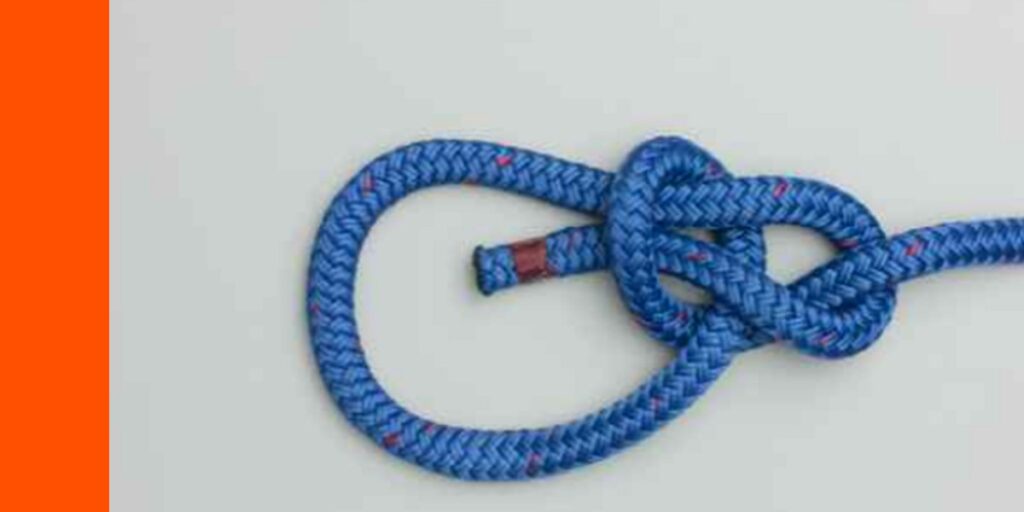
Bowline knot example.
Draft
The distance between the waterline and the keel (lowest part of boat’s hull) of a boat; the minimum depth of water in which a boat will float.
Freeboard
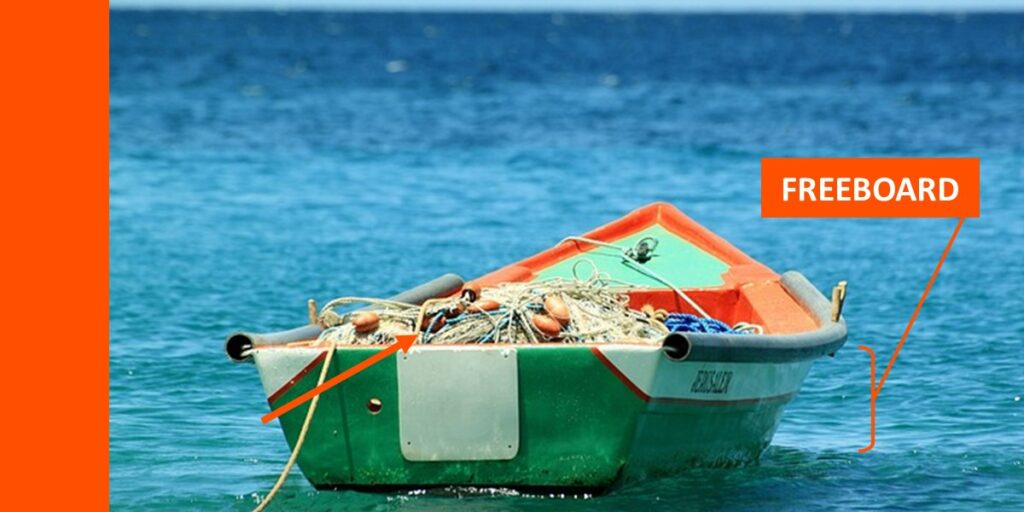
The distance from the waterline to the deck or between the level of the water and the upper edge of the side of a small boat.
Hull
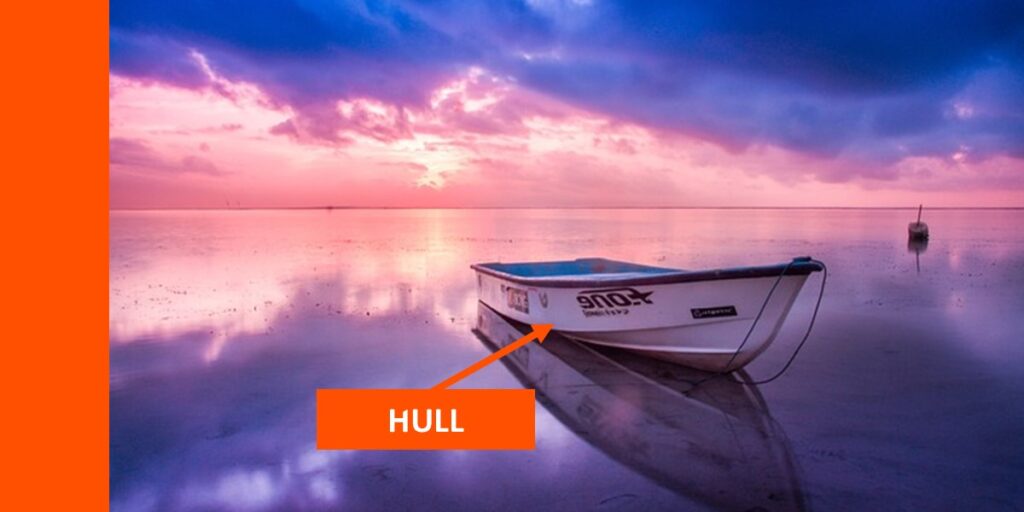
The hull is the bottom part of the boat that sits in the water.
Helm
The steering wheel and controls are located at the helm. This is where the captain of the boat or ship operates from.
Keel
The lowest part of a boat’s hull, which provides strength, stability and sideways drift while in the water.
Navigation Light
These are all the lights on the boat that come into effect at night. Recreational boats are equipped with a stern light, masthead or anchor light, and sidelights. Powerboats, like pontoons, combine the stern light and masthead into a single anchor light.
Navigation lights have two functions – to make your boat visible at night and to indicate the right of way when two vessels approach each other.
PFD
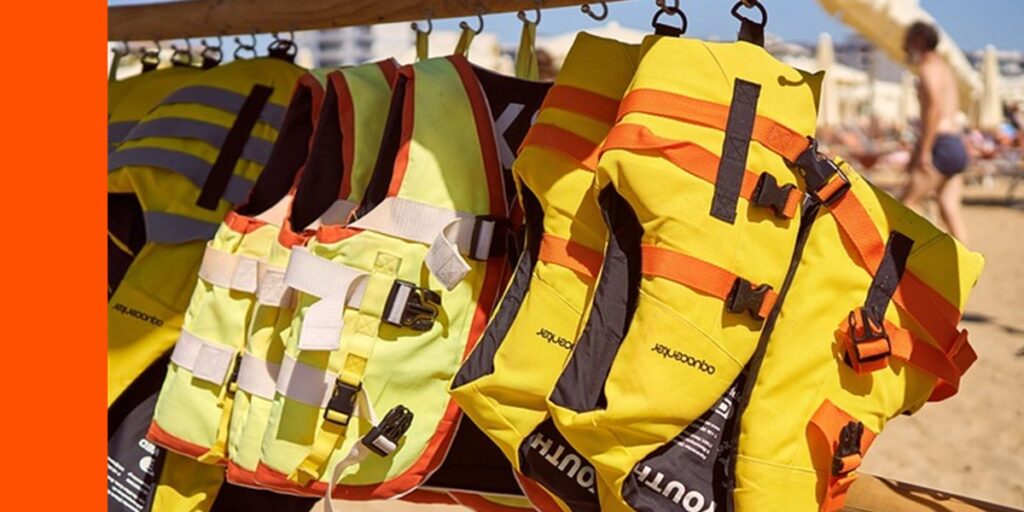
PFD is an acronym for a personal flotation device. These are life jackets and other flotation items. PFDs must be on all vessels according to state laws. Some require children under 10 to wear life jackets at all times, so be sure to check your local regulations.
Port
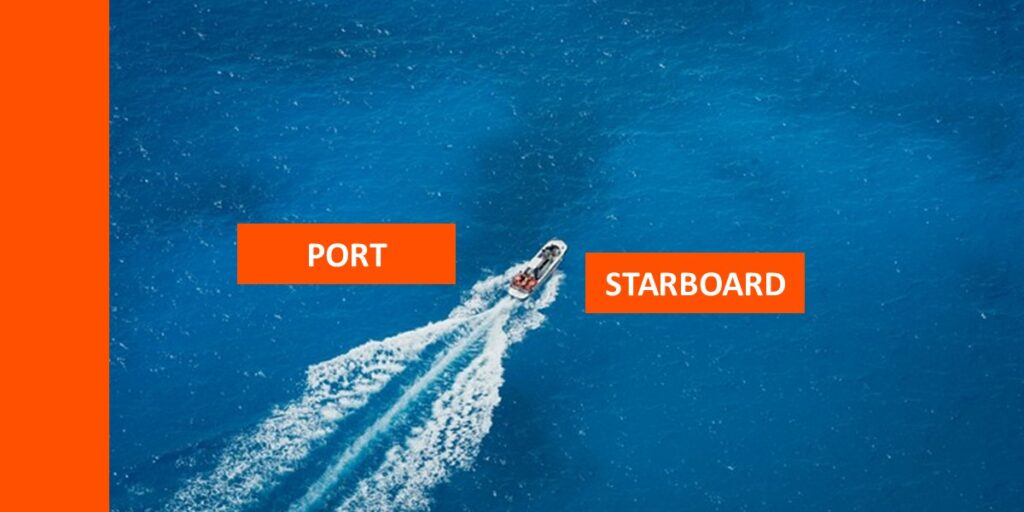
The port side is the left side of the boat when facing the bow (front) of the boat.
Starboard
When facing the front of the boat, starboard is the right side (port is on the left).
Stern
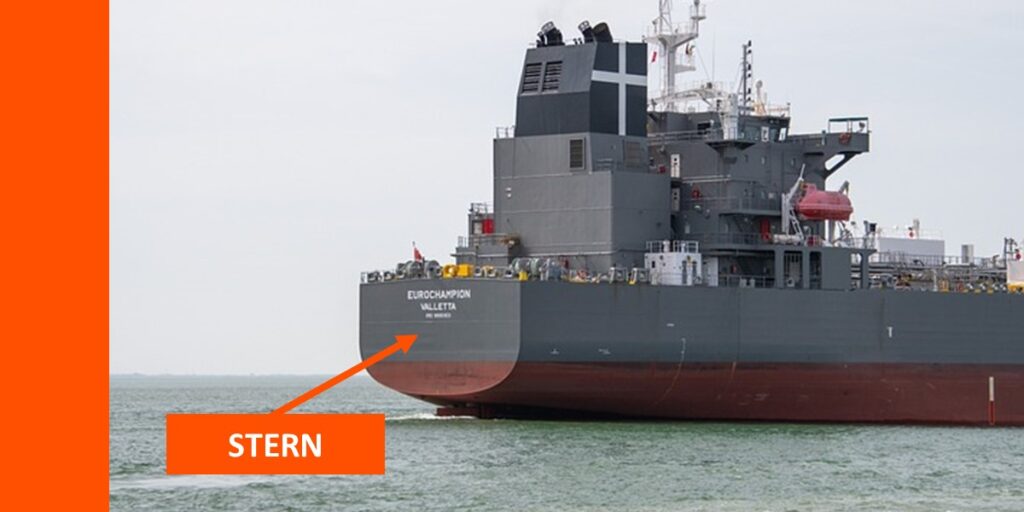
The stern is the back of the boat or vessel.
When facing the bow, the starboard side is the right side of the boat, marked by the green sidelight.
Transom
The transom of a boat is the cross-section of the stern. It is typically flat and serves the purpose of a support structure of the stern and barrier to water.
Trim
Trimming the engine entails it being moved up or down. The button is normally found on the throttle. There are two reasons to trim the engine.
Trimming the motor up to protect the lower unit from hitting the bottom is necessary in shallow water at low speed. You can also adjust the trim for optimal engine performance.
Underway
A boat is underway when it is not docked or anchored. Floating or drifting while using the motor would count as underway.
So, Now You Know Some Boating Terms…
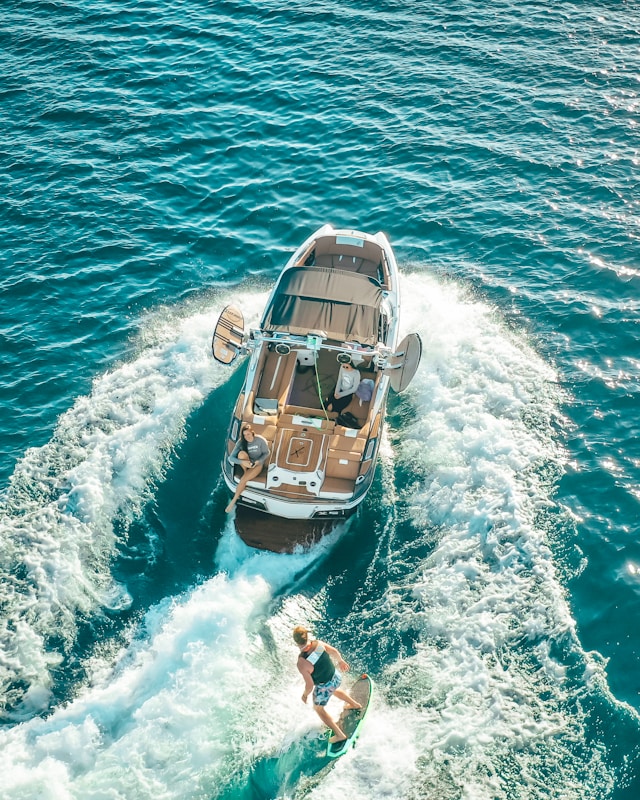
The above boating terms are commonly used among recreational boaters. They are essential things to know for the safety of you and your friends and family when on the water.
Be sure to educate yourself on all water rules in your state and get to know boating etiquette as well. Happy and safe boating… and have fun!

